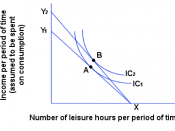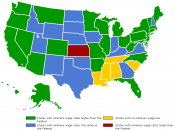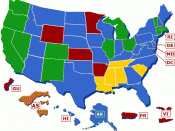Labor involves everyone who works for pay. It can include blue and whit collar workers professional people such as lawyers, physicians, dentists teachers, and owners of small businesses. Wages are the price that employers pay for labor. Such wages as nominal wages and real wages. A nominal wage is the amount of money received per hour, day or year. A real wage is the quantity of goods and services a worker can obtain with nominal wages and reveal the "purchasing power." Wages differ in different nations, regions, occupations, and individuals. Wage rates are much higher in the United States than in China or India. Wages rates also differ by gender, race, and ethnic background.
Specific wage rates depend on the structure of the particular wage market. In a competitive labor market the equilibrium wage rate and level of employment are determined at the intersection of the labor supply curve and labor demand curve and for the individual firm the market wage rate establishes a horizontal labor supply curve.
Monopsony is a market in which a single employer of labor has substantial buying power. Characteristics are: There is only a single buyer of a particular labor; the type of labor is relatively immobile, either geographically or because workers would have to acquire new skills; the firm is a "wage maker" because the wage rate it must pay varies directly with the number of workers it employs. The monopsonist hire fewer workers than are hired under competitive conditions, pays less than comparative wage rates and obtains greater profit. A union may raise competitive wage rates by increasing the derived demand for labor, restricting the supply of labor through exclusive unionism, or directly enforcing an above equilibrium wage rate through inclusive unionism.
Bilateral monopoly is a market in which there...


